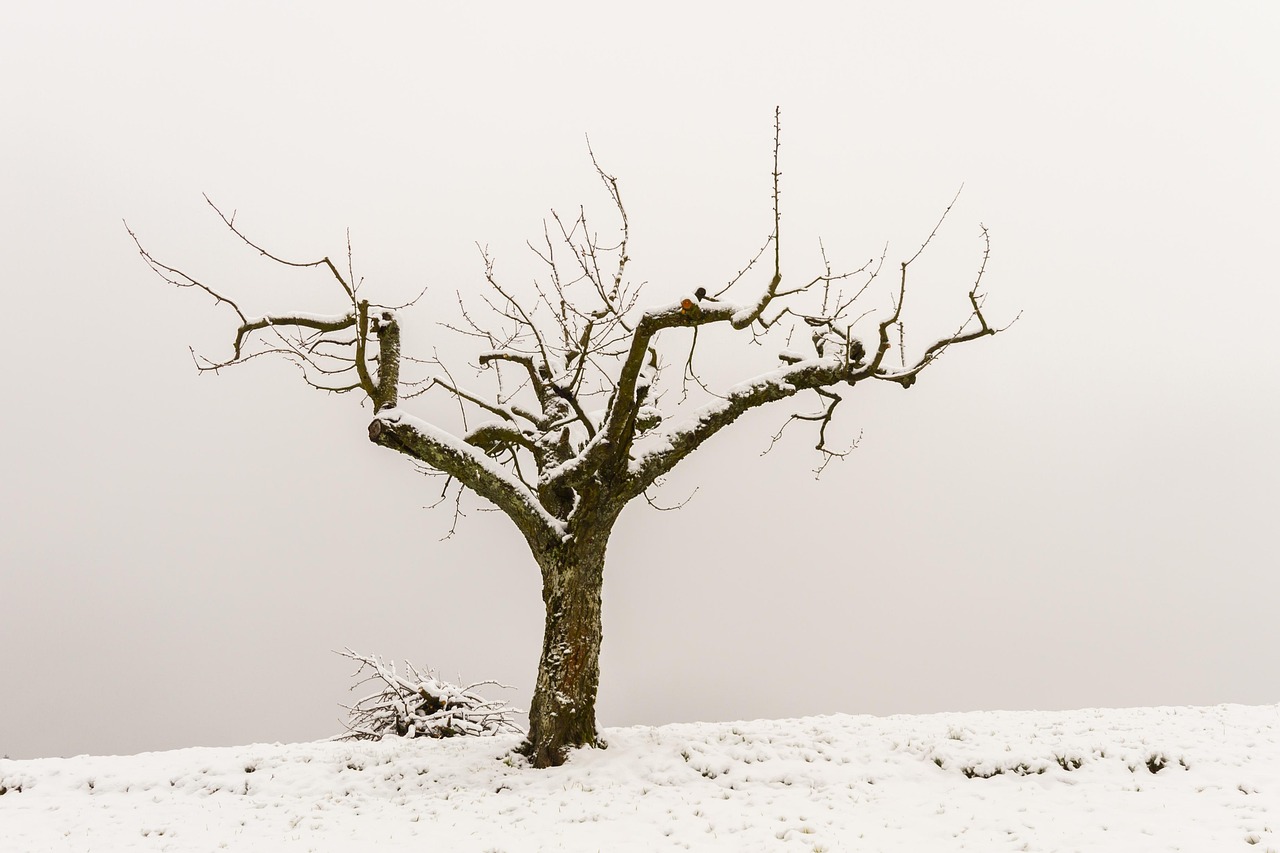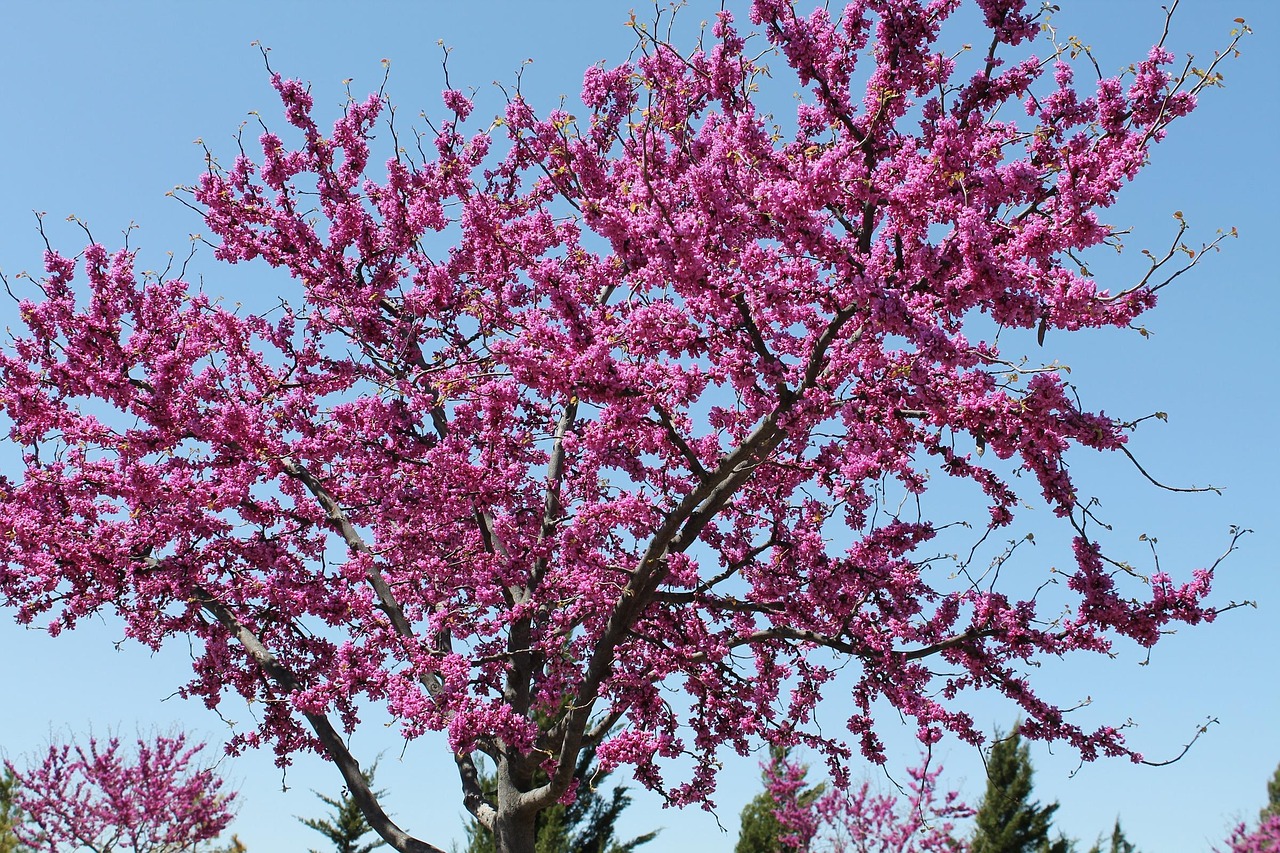Learn essential redbud pruning tips to promote healthy growth and stunning pink blossoms. Timing it in late winter or early spring, using proper tools, and following specific techniques will enhance flowering and prevent common mistakes. Regular care ensures your redbud remains vibrant, healthy, and an eye-catching feature in your garden.
The first time I saw a redbud in full bloom, I was enchanted—those early spring pink flowers just burst out, making me realize how meaningful good pruning can be. I’ve come to understand that proper pruning isn’t just about the aesthetic; it keeps the tree healthy. I’ve also learned to be cautious not to overdo it, especially since these trees can be sensitive. Regular but moderate pruning really makes a difference in blooming potential and overall vitality.

From my experience, redbud trees usually reach about 20 to 30 feet tall, with a similar spread. I love how their heart-shaped leaves and unique branch structure add character; and those blossoms before the leaves even appear? Simply breathtaking. But I’ve discovered that without proper care, they can struggle to flourish. So, I’ve made it a habit to pay attention to their growth patterns and prune accordingly.
| Growth Characteristics | Pruning Benefits |
|---|---|
| Height: 20-30 feet | Encourages new growth |
| Spread: 25-35 feet | Improves air circulation |
| Flower Color: Pink | Enhances flowering |
| Leaf Shape: Heart-shaped | Maintains shape |
Understanding My Redbud
I’ve always admired how resilient and beautiful the redbud (Cercis canadensis) is, thriving in zones 4 to 9. In my yard, I prefer planting it where it gets full sun with well-drained soil. Over time, I’ve learned that regular, thoughtful pruning keeps it showing off those vibrant blooms and healthy foliage. It’s a low-maintenance tree if you give it the right conditions and care.
This tree, naturally found in forests and woodland edges, provides food and habitat for all kinds of wildlife—something I always keep in mind. When I plant a redbud, I see it not just as an ornamental but as part of a lively ecosystem, which makes caring for it all the more meaningful in my gardening routine.

I’ve realized that pruning isn’t just about keeping things tidy; it’s about promoting health. When I prune correctly, I notice fewer disease problems and a much busier, more colorful bush of blooms in spring. It’s like giving my redbud a fresh start each year, making sure it’s strong enough to dazzle when spring arrives.
Pro-Tips and Common Mistakes to Avoid Based on My Experience
When I first started pruning my redbud, I made the mistake of cutting too late in the season, which resulted in fewer blossoms the next year. Now, I always remember to prune in late winter or early spring, just before the buds begin to swell, to ensure a vibrant display.
I used to over-prune my trees, thinking I needed to remove lots of branches to keep it tidy. But I learned that removing more than 25% at once stresses the tree and can reduce flowering. Less is definitely more when it comes to pruning.
Dull tools have been my biggest nemesis—using dull pruners or saws crush the branches and create ragged cuts, inviting pests and diseases. Regularly sharpening and disinfecting my tools has completely changed the health of my trees.
When I first tried pruning without removing dead or diseased wood, I noticed my tree became prone to infections. Now, I always start by removing such branches immediately to promote better health and airflow.
I used to cut straight across larger limbs, leaving stubs that then rotted or caused decay. Now, I cut just above a bud or lateral branch at an angle, which encourages healthy regrowth and reduces problems down the line.
One common mistake I see others make is pruning during late summer or fall. I avoided this because it stimulates weak new growth that won’t survive winter, weakening the tree overall. I keep my pruning for the right seasonal window.
Pay attention to your tree’s natural growth pattern. I used to force shape it into a design I liked, but now I follow its natural lean and flow, which results in a healthier, more aesthetically pleasing tree.
Finally, I used to forget about post-pruning care, neglecting watering and mulching. Now, I give my redbud extra water and a layer of mulch after pruning, helping it recover and produce those stunning blooms in spring.
When I Always Prune My Redbud
From my experience, late winter or early spring is the best time to prune. I do mine just before the buds swell because I’ve found that this timing helps the tree recover quickly and produce a spectacular show of blossoms. I’ve made the mistake of pruning too late and saw fewer flowers the next year—it’s a lesson I always remember to avoid!
I’ve also learned to steer clear of heavy pruning during late summer or fall because it can stimulate weak new growth that won’t survive winter. In my yard, I prefer to wait until just before the active growing season kicks in for the best results. Understanding the tree’s natural cycle for growth and dormancy is key — trust me, it makes all the difference.

My Favorite Tools for Pruning
I always keep my pruning kit ready for when the moment is right. In my experience, having the right tools really helps make the job easier and both my tree and I happy:
- Bypass pruners: I use these for those delicate, smaller branches. They give a clean cut every time.
- Loppers: For thicker, more stubborn branches, I swear by my loppers—they save so much effort.
- Saw: A good pruning saw is a must-have for really thick limbs. I keep mine sharp and ready for any challenge.
- Gloves: Protecting my hands is always a priority—branches can be prickly!
- Safety goggles: I always wear goggles — I learned early on that safety comes first, especially when working with larger branches or power tools.
Sharpen your tools regularly because dull blades are a hazard and make cleaner cuts. Also, I always disinfect my tools between cuts to prevent disease spread—better safe than sorry.
My Tried-And-True Pruning Technique
I’ve found that careful planning and execution of pruning make all the difference. Here’s how I approach it:

- Remove dead or diseased wood: I always snip these away first. It keeps the tree healthier immediately.
- Thin out crowded branches: I look for crossing or rubbing limbs—these always lead to weak spots or disease, so I remove some to let air flow freely.
- Shape naturally: I prefer to follow the tree’s natural growth pattern, trimming just enough to maintain balance without altering its character.
- Avoid topping: I stay away from cutting large sections of main limbs—doing so can do more harm than good.
- Make clean cuts: I cut just above a bud or lateral branch at an angle to encourage healthy regrowth. It’s a simple practice that saves trouble down the line.
My Biggest Warning: What to Watch Out For
I’ve learned firsthand that mistakes can be costly. Over-pruning, for instance, stresses the tree and reduces blooms. I always remind myself not to remove more than 25% at once—less is more. I also avoid pruning at the wrong time because I want my tree to focus on healthy growth, not recovery from cuts.
Using dull tools is a no-go—the crush damage can invite pests and disease. I make sure my tools are sharp and disinfected before each use. And I never leave stubs after cutting; that’s just asking for trouble. Cutting back to a healthy bud or branch is always the way to go, based on my experience.
Signs I Know It’s Time to Prune
It’s easier than you might think once you know what to look for. I always check for:
- Dead or dying branches: No leaves or browning? Time to remove them.
- Crowding: If branches are tightly packed or crossing, I prune a few to open it up.
- Broken or weak limbs: These can be dangerous, especially during storms, so I take care of them early.
- Pests or disease signs: Spotting insects or discoloration? I prune infected parts immediately.
- No blooms: When the tree isn’t blooming well, I consider a light prune to stimulate growth.
Post-Pruning Care — What I Always Do
Once I’ve pruned, I make sure to give my redbud special seasonal attention:
Spring
- Waterdeeply: After pruning, I water thoroughly to help it recover and support bud development.
- Mulch: A fresh layer around the base helps keep moisture in and weeds out.
- Fertilize: I use a balanced fertilizer adhering to instructions to encourage strong new growth.
Summer
- Water regularly: During dry spells, I make sure the soil stays moist.
- Watch for pests: Early detection keeps issues manageable.
- Fertilize midsummer: Supports ongoing growth and flowering.
Fall
- Keep watering: Moisture is vital before winter dormancy.
- Remove fallen leaves: To prevent fungal diseases and pests overwintering.
- Check for damage: Address any concerns before it gets too cold.
Winter
- Protect young trees: I wrap them to guard against frost and wind.
- Avoid pruning: I hold off on cutting during winter since it stresses the tree.
- Inspect and monitor: I keep an eye out for pests or damage during temperature swings.
Enhancing Your Garden Beauty with Redbuds
Want to make your redbud stand out even more? I love pairing it with daffodils or pansies—bright, colorful companions that bloom around the same time. Installing garden lights at night can turn your landscape into a magical scene, highlighting those gorgeous blossoms. And if you add benches or walking paths nearby, it turns into a serene spot for enjoying nature’s artwork.
Watch Out for Pests and Diseases — My Personal Warnings
I always keep a lookout for common pests like aphids, spider mites, and Japanese beetles. I’ve learned that early detection helps a lot. For small infestations, I prefer organic methods like neem oil or insecticidal soap—safe and effective. Sometimes, introducing beneficial insects like ladybugs makes pest control easier and more eco-friendly.
Diseases like cankers, leaf spot, root rot, or powdery mildew can sneak in if I’m not careful. I’ve seen how overwatering and poor airflow make things worse. My rule is to ensure good drainage, remove infected parts immediately, and avoid overhead watering whenever possible. Using appropriate fungicides when needed is also part of my routine.
Picking the Perfect Spot for Your Redbud
In my experience, choosing the right location is critical. Redbuds love full sun to partial shade, so I plant mine where they get at least six hours of sunlight — a daily dose! The soil should drain well but still retain some moisture. I always check pH levels and enrich the soil with organic matter to give my tree the best start.
Protection from harsh winds and extreme weather is also something I factor in. Young trees need a bit of shelter until they establish themselves. Proper placement always results in more vigorous blooms and healthier growth.
